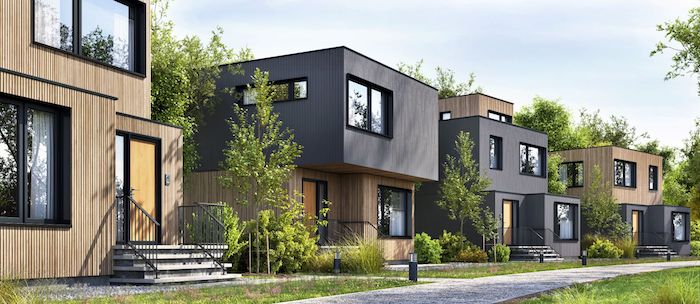Table of Contents

In construction, a building’s exterior serves more than just an aesthetic purpose; it’s also about functionality. Cladding offers a harmonious blend of both visual appeal and performance.
Cladding is a product of a variety of materials, including wood, metal, brick, vinyl, and composite, depending on the desired aesthetics and functional requirements.
In multi-family buildings, it acts as a protective shield against the elements, ensuring both the structure’s integrity and the safety of its residents. But, like all things, cladding has a lifespan. So, when is it time to consider recladding, and why is it so crucial?
The Protective Role Of Cladding
Imagine your multi-family building as a human body. The cladding is akin to the skin, offering protection from external elements.
Here’s why it’s essential:
- Safety first: Cladding acts as a barrier against environmental factors like rain, wind, and extreme temperatures. Compromised cladding can lead to moisture seeping in, causing structural damage or mold growth.
- Energy efficiency: A well-maintained cladding system ensures optimal insulation, leading to reduced energy bills.
- Aesthetic appeal: First impressions matter. Fresh, modern cladding can significantly enhance the building’s curb appeal, attracting potential tenants or buyers.
- Durability and longevity: Quality cladding acts as a defense against wear and tear, prolonging the life of the building. It offers resistance to factors like UV rays, which can degrade building materials over time.
- Noise reduction: Cladding can serve as an effective sound barrier, reducing external noise pollution. This is particularly beneficial for multi-family buildings in bustling urban areas, ensuring residents have a peaceful living environment.
- Fire resistance: Some cladding materials are designed to be fire-resistant, adding an extra layer of safety. This is especially crucial in areas prone to wildfires or in densely populated urban settings where fire safety is paramount.
Should you believe your building is due for recladding, it’s advisable to consult specialists such as Multi-M. They’ll guarantee a safe and efficient start-to-finish process.
Recognizing The Need For Recladding
One good thing about cladding is that it may take decades before you consider redoing it. Depending on the material you used, the waiting period can range from over 20 years for wood to over 50 years for brick or stone.
However, events like adverse weather and physical damage can necessitate a recladding before the period is over. Recognizing when your building is due for this process is important. Here are some tell-tale signs to guide you:
- Visible cracks or damages on the exterior. Such imperfections can compromise the building’s structural integrity and allow for external elements to penetrate.
- Unexplained spikes in energy bills, hinting at insulation issues. Inefficient cladding can lead to heat loss, driving up heating costs.
- Reports of water leaks or drafts from residents. These complaints often indicate that the cladding is no longer effectively sealing the building.
- Over time, cladding can develop uneven patches of discoloration or stains, signaling potential water damage or material degradation.
- Sections of the cladding may start to peel away or warp, indicating material failure.
- Frequent repairs or cleaning of the building’s exterior might suggest the cladding is nearing the end of its lifespan.
The Recladding Process
Undertaking a recladding project for multi-family buildings might appear daunting. However, with the right expertise and team, the process can be seamless.
1. Assessment
Before anything, conduct a thorough inspection to gauge the extent of damage and the type of recladding required. For multi-family buildings, this step is crucial to ensure the safety and comfort of all residents.
2. Material Selection
Based on the building’s location and design, choose materials that offer durability and aesthetic appeal. For buildings in coastal areas, for instance, you might opt for corrosion-resistant materials to withstand salty air.
3. Notify Residents
Recladding can be disruptive, especially in a multi-family setting where many residents are affected. Ensure residents are informed well in advance to make necessary arrangements, minimizing inconvenience.
4. Implementation
With a skilled team, the old cladding is removed, any underlying issues are addressed, and the new cladding is installed. In multi-family buildings, coordination is key to ensure the process is efficient and minimally intrusive.
5. Maintenance
Post-recladding, regular checks ensure longevity and optimal performance. For multi-family buildings, consistent maintenance can prevent large-scale issues that could affect multiple residents.
Closing Thoughts
The exterior of multi-family buildings is more than just a pretty facade—it’s also an assurance of safety and efficiency. Recladding ensures these residences maintain their protective integrity for the long haul. So, use the knowledge gathered here, reach out to experts, and improve the quality and safety of your multi-family units.
